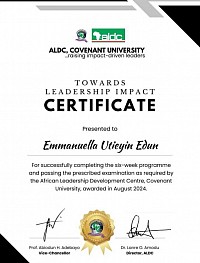TO SHOWCASE THE ACTIVITIES OF THE FOUNDATION AS THEY UNFOLD AND TO ADDRESS SENSITIVE ISSUES THAT AFFECT TEENS AND LEARNING.
TEENS AND SELF DESTRUCTIVE TENDENCIES
Adolescence is a critical phase of life, marked by rapid physical, emotional, and social changes. While it's a time of exploration and growth, many teenagers struggle with self-destructive tendencies that can have devastating consequences. These harmful behaviors can stem from various factors, including peer pressure, family dynamics, mental health issues, and societal expectations.
Common Self-Destructive Tendencies in Teens:
1. Substance Abuse: Experimentation with drugs, alcohol, or prescription medications can lead to addiction and long-term damage.
2. Self-Harm: Cutting, burning, or inflicting physical harm on oneself as a coping mechanism for emotional pain.
3. Eating Disorders: Anorexia, bulimia, or binge eating can have severe physical and mental health consequences.
4. Risky Sexual Behavior: Engaging in unprotected sex, multiple partners, or sexting can lead to STIs, unintended pregnancy, and emotional trauma.
5. Cyberbullying and Online Harassment: Spreading hate or hurtful content online can harm others and oneself.
6. Reckless Behavior: Engaging in dangerous activities, such as reckless driving or daredevil stunts.
Causes and Contributing Factors:
1. Mental Health Issues: Depression, anxiety, and trauma can trigger self-destructive behaviors.
2. Peer Pressure: Social influence and fear of rejection can lead teens to engage in harmful activities.
3. Family Dynamics: Dysfunctional relationships, abuse, or neglect can contribute to self-destructive tendencies.
4. Social Media: Unrealistic expectations, cyberbullying, and constant comparison can harm self-esteem.
5. Lack of Coping Mechanisms: Inadequate stress management and problem-solving skills can lead to destructive behaviors.
Recognizing Warning Signs:
1. Changes in mood, appetite, or sleep patterns.
2. Withdrawal from friends and family.
3. Increased secrecy or evasiveness.
4. Physical signs of self-harm or substance abuse.
5. Declining academic performance.
Interventions and Support:
1. Open Communication: Encourage honest discussions and listen without judgment.
2. Professional Help: Consult therapists, counselors, or support groups.
3. Healthy Coping Mechanisms: Teach stress management techniques, such as exercise, mindfulness, or creative expression.
4. Positive Role Models: Surround teens with supportive, positive influences.
5. Education and Awareness: Provide information on mental health, substance abuse, and safe online practices.
Breaking the Cycle:
1. Foster a supportive environment
2. Encourage self-expression and individuality
3. Teach resilience and coping skills
4. Model healthy behaviors
5. Seek professional help when needed
By understanding the causes and recognizing warning signs, we can intervene and support teens struggling with self-destructive tendencies.
It's crucial to create a safe, supportive environment that promotes healthy coping mechanisms, self-awareness, and positive relationships.
1 year old, Forever To Go...😇
To plant a book Tree, you must first sow seeds of durable knowledge.
Plant A Book Tree Foundation, a society development NGO geared towards the welfare of students and teachers in public secondary school settings and the dissemination of viable and durable knowledge and information, is one year old!!!!
Glory be to GOD!!!!!!!
Within one Year, we have sown seeds which will soon sprout to yield substantial impact.
We have liased with several other social enterprise organizations with like vision.
We have fed students life transforming information.
We have set up programs for the colossal mental transformation and empowerment of public secondary school teachers and students.
We have set up initiatives for their physical welfare as well.
We have published books, trained Teens coaches and mentors, trained Teenagers and will yet do more trainings.
We have a lot of projects on our table and we will accomplish all in due time.
We have had discourses addressing the state of education in the country and the way forward.
There are libraries to be built and equipped, there are schools to be built and also renovated, there are teachers and students to be encouraged financially and empowered mentally, there are adolescent writers to be published.
As we celebrate one year of steady progress, we look forward to more Years of massive productivity, So help Us GOD.🙏🙏
Congratulations to the Chairman, Board Of Trustees of Plant A Book Tree Foundation For this Laudable Feat.
"Commit yourself to lifelong learning. The most valuable asset you'll ever have is your mind and what you put into it."
Albert Einstein
" Anyone who stops learning is old, whether at twenty or eighty; Anyone who keeps learning stays young."
Henry Ford
" Learning is a treasure that will follow its owner everywhere."
Chinese Proverb
" Learning is a treasure no thief can touch."
Indian Proverb
💃💃💃💃
Thanks African Leadership Development Center Of Covenant University for this opportunity.
Teenagers And The Fear Of Missing Out(FOMO).
TThe Fear of Missing Out (FOMO): Understanding its Impact on Teenagers by Emmanuella Edun-Adedeji.
Introduction:
In today's digitally connected world, the fear of missing out (FOMO) has become a pervasive phenomenon among teenagers.
FOMO refers to the anxiety or apprehension that arises from the feeling that others are having a more fulfilling experience or achieving more than oneself.
This fear can lead to a range of negative emotions, behaviors, and consequences that affect the mental health, relationships, and overall well-being of teenagers.
The Rise of FOMO in Teenagers:
The widespread use of social media platforms, smartphones, and the internet has created an environment where teenagers are constantly exposed to curated highlight reels of their peers' lives.
This can foster unrealistic comparisons, fueling feelings of inadequacy and FOMO. Social media platforms showcase the accomplishments, relationships, and experiences of others, making it easy for teenagers to feel left behind or missing out.
Effects of FOMO on Teenagers:
1. Anxiety and Stress: FOMO can lead to increased anxiety and stress levels, as teenagers feel pressure to stay connected and up-to-date with events and activities.
2. Sleep Deprivation: The need to stay connected can lead to late-night scrolling, resulting in sleep deprivation and related physical and mental health issues.
3. Decreased Self-Esteem: Constant comparisons can erode self-esteem, as teenagers feel they don't measure up to their peers.
4. Impulsive Decisions: FOMO can lead to impulsive decisions, as teenagers try to keep up with their peers or seek instant gratification.
5. Strained Relationships: FOMO can damage relationships, as teenagers prioritize staying connected over meaningful interactions with family and friends.
Overcoming FOMO in Teenagers:
1. Mindfulness and Self-Awareness: Encourage teenagers to recognize and acknowledge their FOMO feelings, practicing mindfulness techniques to manage anxiety.
2. Set Boundaries: Establish screen-free zones and times, promoting balance between online and offline activities.
3. Foster Real Connections: Encourage face-to-face interactions, nurturing deeper relationships and a sense of belonging.
4. Focus on Personal Growth: Support teenagers in pursuing their passions and interests, cultivating a sense of purpose and fulfillment.
5. Seek Professional Help: If FOMO symptoms persist, consider seeking guidance from a mental health professional.
In Conclusion, FOMO is a pervasive issue affecting teenagers, with far-reaching consequences for their mental health, relationships, and overall well-being. By understanding the causes and effects of FOMO, we can work together to create a supportive environment that encourages teenagers to develop healthy coping mechanisms, prioritize meaningful connections, and cultivate a positive sense of self.
Emmanuella Edun-Adedeji is a Behavioral Capacity Development Consultant with special interest in Teens welfare.
She has 16 years experience in Teens Coaching and Counseling.
The Struggle Of The 21st Century Teenager
The 21st century has brought about unprecedented challenges for teenagers, who are navigating a complex and ever-changing world. From social media pressures to academic stress, mental health concerns to peer relationships, teenagers today face a unique set of struggles that can impact their well-being, self-esteem, and future success.
Social Media (A Double-Edged Sword):
Social media has revolutionized the way teenagers interact, communicate, and present themselves to the world. While it offers countless benefits, such as connecting with others, accessing information, and self-expression, it also perpetuates unrealistic expectations, cyberbullying, and constant comparison. Teenagers are bombarded with curated highlight reels, making it difficult to distinguish reality from fiction. This can lead to feelings of inadequacy, low self-esteem, and anxiety.
Academic Stress (The Pressure to Succeed):
The pressure to excel academically has never been more intense. Teenagers are expected to perform well on standardized tests, maintain high grades, and participate in extracurricular activities to secure college admissions and future career prospects. This stress can lead to burnout, decreased motivation, and a narrow focus on grades rather than genuine learning.
Mental Health (The Silent Struggle):
Mental health concerns, such as depression, anxiety, and suicidal thoughts, are on the rise among teenagers. The stigma surrounding mental illness often prevents them from seeking help, fearing judgment or repercussions. The constant scrutiny of social media, academic demands, and societal expectations can exacerbate these issues.
Peer Relationships: Navigating Friendships and Romance:
Teenagers are learning to navigate complex social dynamics, including friendships, romantic relationships, and peer pressure. These relationships can be a source of support, comfort, and joy, but also lead to drama, heartbreak, and conflict.
Identity Formation: Self-Discovery and Exploration:
The teenage years are a critical period for identity formation, as individuals explore their values, beliefs, and passions. However, this process can be fraught with uncertainty, self-doubt, and experimentation, leading to confusion and anxiety.
Family Dynamics: Changing Roles and Expectations:
Teenagers are caught between childhood and adulthood, often struggling to assert their independence while still relying on family support. Changing family dynamics, such as divorce, blended families, or financial stress, can add to the challenges.
Body Image and Self-Esteem:
Societal beauty standards, perpetuated by media and social media, can lead to body dissatisfaction, negative self-talk, and low self-esteem. Teenagers, especially girls, are vulnerable to these pressures, which can impact their mental and physical health.
Substance Abuse and Addiction:
The temptation to experiment with substances, whether to cope with stress, fit in with peers, or rebel against authority, is a significant concern. Addiction can have long-term consequences, affecting mental and physical health, relationships, and future prospects.
Navigating the Digital World:
The internet and social media have created new risks, such as online harassment, privacy concerns, and digital footprints. Teenagers must learn to navigate these challenges while maintaining a healthy online presence.
Conclusion:
The struggles of teenagers in the 21st century are complex, multifaceted, and interconnected. It is essential for parents, educators, mental health professionals, and policymakers to acknowledge these challenges and work together to provide support, resources, and guidance. By promoting open communication, empathy, and understanding, we can help teenagers build resilience, develop healthy coping mechanisms, and thrive in an ever-changing world.






